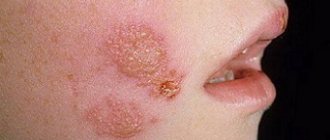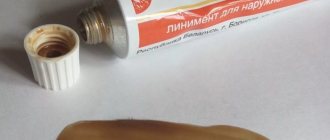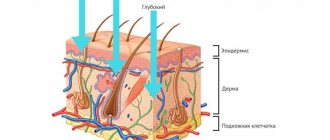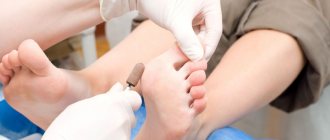How does a water callus form?
A callus forms where excess pressure and friction are applied to the skin.
The most common reason that leads to the formation of calluses is wearing tight or ill-fitting shoes. A water callus is accompanied by the appearance of a blister that is filled with fluid. The mechanism of its formation is simple. When friction is applied to the skin and soft tissues, they begin to separate. The top layer of the epidermis comes off first. Exudate begins to flow into the resulting space. It consists of blood, intercellular fluid, and plasma. Leukocytes contained in the blood destroy all pathogenic flora and prevent microbes from multiplying. The plasma, in turn, prevents further erasure of the dermis.
Water blisters hurt, cause a person to experience discomfort, and worsen their quality of life. To prevent infection from getting into the callus, it is necessary to begin treatment as early as possible.
If the bubble burst
Unintentional rupture of the bubble requires immediate action. Especially if this happens not at home, but at work or while walking. The wound will become infected very quickly.
In such circumstances, the following procedure is required:
1Wash your hands. If you don't have soap and water nearby, you can use antibacterial wipes or a special gel.
2 Treat the edges with peroxide. If the antiseptic gets into the wound, the regeneration process will slow down significantly.
3After treatment, apply a patch with an antibacterial effect. This will prevent infection.
4In addition to the antibacterial type of medical products, anti-corn medications are used. They absorb remaining lymph and promote healing.
5The free edges of the epidermis are carefully cut off with scissors.
Causes and symptoms of wet callus formation
A wet callus occurs due to friction and shearing of the upper layers of the skin relative to the deeper ones. As a rule, initial pathological changes in the structure of the integument remain asymptomatic. Prolonged mechanical action leads to peeling of part of the epidermis, an inflammatory process and the formation of a blister filled with liquid.
The immediate causes of a watery callus can be:
- hard or too tight shoes, wearing them on bare feet,
- abrasion of the skin when in contact with hard wardrobe items or accessories (for example, a bag belt),
- long-term work with gardening and repair tools,
- playing sports with hard equipment (playing tennis or cycling).
Sensitive and thin skin, hyperhidrosis and sweating of the feet when wearing warm shoes or in the summer significantly increase the risk of developing a wet blister.
The main symptoms of water callus on the leg:
- pain;
- affected skin;
- filling the affected area with liquid;
- pain when pressing on the area;
- pain during the formation of the callus and after its opening;
- discomfort when walking.
Calluses: Common Risk Factors
The immediate cause of calluses is mechanical friction to which the skin is exposed.
However, some people develop hyperkeratosis and others do not.
The reason for this is external and internal factors that affect the risk of calluses.
Common factors include:
- age
- floor
- body mass
With age, the risk of hyperkeratosis increases.
In men, the peak incidence is 50-60 years, and in women – 60-70 years.
This is due to age-related skin changes.
They are as follows:
- dehydration of the epidermis
- reduction in the thickness of subcutaneous fat
- epithelial cells become flatter
- other dermatological diseases are added that make the skin more vulnerable to mechanical stress
As you age, your skin becomes tougher.
It is less elastic and not as resistant to stretching.
The most statistically significant correlation between the risk of callus formation and age is observed in diabetics.
It is also known that with age, the feet become flattened.
The height of the longitudinal arch decreases.
This changes the pressure that the body weight puts on different parts of the feet.
Gender influences the risk of developing calluses.
Statistics show that women with foot hyperkeratosis seek medical help higher than men.
The reasons for this phenomenon are not known.
Women have higher skin elasticity.
It would seem that the frequency of callus formation in them should be lower.
Some researchers have linked the higher incidence of hyperkeratosis in females to shoe preferences.
Men primarily choose convenience over design.
While women often wear uncomfortable shoes that rub their skin, just to look more attractive.
Diabetes mellitus affects the appearance of calluses in both men and women.
The risk of their formation increases.
In addition, diabetics are characterized by peculiarities in the localization of calluses.
They usually appear on the dorsum of the little toe or the plantar surface of the first (“big”) toe.
Another common risk factor for calluses is a person's body weight.
It has been reliably determined that the higher it is, the more often hyperkeratosis is formed.
Moreover, its main localization is the heel region.
It is the back of the foot that experiences increased stress in obesity.
To a lesser extent, it increases in the midfoot.
The fingers don't suffer at all.
Therefore, the frequency of callus formation here is the same as in people with normal weight.
Diagnosis of water callus
Water calluses on the feet are diagnosed as follows:
- an examination is carried out by a dermatologist;
- You may need additional consultation with a rheumatologist, podologist or orthopedist.
Calluses should not be confused, for example, with inflammatory changes in joints, pinched nerves, inflammation of hangnails, genetically determined keratinization of the skin, and warts.
When diagnosing water callus, it is important to determine whether the patient has concomitant diseases. For example, varicose veins, diabetes mellitus, venous insufficiency, neuritis and so on.
Does it hurt or not?
If it doesn't hurt, it's most likely a callus.
Because it only hurts with vertical pressure.
If pain is present, it is probably a plantar wart.
In a clinical setting, the doctor carries out differential diagnosis by scraping the formation and studying it with a magnifying glass.
The wart has blood vessels and bleeds.
There are no vessels in the callus unless the basal layer of the epidermis is damaged.
Joint pads are formations that are areas of thickened skin.
The process affects not only the epidermis, but also the dermis.
Usually such thickenings appear above the interphalangeal joints.
They differ in that they are completely painless.
In addition, they retain elasticity.
Articular pads, unlike calluses, can be folded.
Calluses are large areas of keratinization that look like small calluses on the foot.
They occur where there is increased stress on the skin.
This hyperkeratosis is diffuse, not local.
It has no clear boundaries and is not considered a callus.
On palpation, the callus is not painful at all.
Is it possible to pierce a callus with liquid?
The blood plasma filling the bladder protects the injury site from pain. Therefore, small calluses usually heal on their own and do not need piercing. To do this, simply cover the problem area with a band-aid.
If the formation is large in diameter and causes significant discomfort, it can be pierced. Otherwise, the protruding callus may burst on its own as a result of injury. After a puncture, healing proceeds faster than with an accidental rupture.
To avoid infection and ensure rapid healing, you must follow a number of rules:
- Before piercing, treat damaged skin and hands with an antiseptic solution.
- Use a sterile needle. To disinfect, you can hold it over a fire or put it in alcohol for a few minutes.
- Make punctures on the sides of the callus, holding the needle parallel to the skin.
- If the callus is large, pierce it in several places to completely release the liquid.
- Use gentle movements to get rid of the liquid inside.
- It is better to pierce the first day after the formation of a blister.
- After the puncture, do not remove the covering skin under any circumstances; as it dries, it will come off on its own.
Precautionary measures
Dropsy contains a clear liquid, lymph. It is not dangerous, but bacteria can accumulate in it.
When an infection occurs, blood poisoning occurs. For this reason, any actions performed must be careful.
If the bubble bursts, then it is worth preventing infection from entering the wound. You should wear an antibacterial patch and wash the wound with hydrogen peroxide.
If redness or inflammation occurs, you should consult a specialist.
Treatment of water callus
Small water calluses heal on their own. But in some cases, aching pain occurs, the liquid takes on an opaque cloudy appearance and the skin around the wound becomes inflamed. This indicates infection of education. It is strictly forbidden to self-medicate; you need to urgently go to the clinic.
If there are no signs of inflammation, then you can speed up the healing process using medications.
The following ointments are suitable for treating wet calluses:
- Levomekol – combines antiseptic and healing properties. The wet callus is sealed with a plaster or covered with a sterile bandage. It is necessary to change at least 3 times a day.
- Salicylic ointment – anesthetizes, relieves inflammation and disinfects. The product is left overnight, and in the morning the leg should be rinsed thoroughly.
- Compeed patch for wet calluses is impregnated with a special composition that disinfects and dries the blister.
Apply the product in a thick layer onto a sterile bandage and apply to the painful area. It is better to apply bandages at night.
For quick healing of formations, it is better to use Compeed patches for wet calluses with hydrocolloid properties. They are made using special technology from breathable fabric. The patches protect the wound from infection, accelerate the skin regeneration process and provide pain relief.
What is prohibited to do
When a growth appears, it is strictly forbidden to pierce it yourself. This is explained by the fact that it is possible to introduce an infection into the wound, which will negatively affect the treatment process.
Treatment of a burst callus
If the neoplasm has burst, then it is recommended to clean it of contamination. For this purpose, the wound is washed in warm water and soap.
If there is dirt under the skin, it is recommended to remove it without fail.
Next, the wound is treated with an antiseptic solution, which should not contain alcohol. After this, medicine and a sterile bandage are applied to the wound.
First aid
When a growth appears, patients often experience severe pain. In this case, he is recommended to provide first aid. The patient should get rid of tight shoes.
How to treat a wet callus, watch this video:
If this cannot be done, then it is recommended to apply a sterile bandage or plaster to the site of the growth.
Traditional methods of treatment
To speed up the process of skin restoration, you can supplement traditional methods of treating calluses with folk remedies.
The most effective of them are:
- Applying a compress with aloe pulp to the callus. This procedure will reduce the intensity of pain, eliminate swelling, and relieve inflammation. To prepare a compress, you need to remove the skin from the aloe leaf. In this form, the plant is applied to the affected area. The sheet must be secured with a bandage or adhesive tape. The application should be changed once a day. Treatment continues until the skin is completely restored.
- Treatment of calluses with a mixture of vegetable oil and tea tree oil. In this case, take one part tea tree oil to 3 parts vegetable oil. Apply the composition to the callus 4 times a day. This allows not only to speed up tissue regeneration, but also to disinfect the wound. The concentration of substances must be observed, since tea tree oil can cause skin burns if applied to the dermis in its pure form.
- Compress with herbal decoction. To treat calluses, you can use a decoction of chamomile or calendula. When the product is ready, soak a bandage with it and apply it to the callus. This will speed up the recovery process and relieve inflammation.
- Performing baths with a decoction of oak bark. Such procedures make it possible to dry the callus, reduce inflammation, and speed up recovery. The bath should be done once a day, for 5-10 minutes. After treatment, the feet need to be dried.
Drug therapy for calluses
Treatment with medications is shown most effectively in the case of the formation of dry growths, as well as in the formation of calluses on a child’s foot.
Callus plasters are used, which have a keratolytic effect.
This method of therapy has a number of advantages:
- when using keratolytics, symptoms of discomfort are reduced
- the patch prevents infection
- accelerates the healing process of the skin
The pharmaceutical industry produces several types of patches.
Let's look at the commonly used ones:
- Salipod. The active ingredient included in this drug is salicylic acid. Under the influence of acid, dying epithelial cells dissolve, and the reproduction of healthy cells is activated. The patch is effective not only against corns, but also against growths with a shallow penetration rod.
- Mozolin. The substances contained in the patch soften rough skin. The soft layers of the growth begin to peel off and healthy tissue remains in place of the callus.
- Space. The product contains silicone. The drug has hypoallergenic properties, helps eliminate pain and stimulates regenerative processes. The patch is recommended for use by people with sensitive skin.
In addition to patches, preparations in the form of gels and ointments based on lactic or salicylic acids can be prescribed.
They effectively remove rough areas of skin.
For corns and dry growths, Bensalitin ointment can be used, acting as an antiseptic;
The disinfecting effect is expressed in Levomekol and Vishnevsky ointment.
Alkaline solutions: sodium hydroxide - promotes the dissolution of dead cells.
Soda baths have a similar effect.
Removing dry callus with a rod
With prolonged irritation of the skin, cell proliferation increases, which provokes thickening of the skin and contributes to the formation of a convex callus with a core.
Therapy for such growths is long-term.
When the convex part of the growth is cut off, it grows again.
Foot baths help remove dry growths on the legs.
The container is filled with hot water and mustard powder or soda is added to it.
After steaming the foot, the stratum corneum of cells can be easily removed.
Then the rod is treated with celandine juice.
This product should be used with great caution so as not to cause a burn to healthy skin.
The area prepared in this way is sealed with a “Salipod” plaster.
This manipulation usually takes a long time and you have to wait several days for the effect.
The problem can be solved much faster with the help of modern techniques for removing skin growths.
You should consult a doctor if some time has passed after the procedure and there is no result.
It is also necessary to urgently go to a specialist if an inflammatory process has developed in the area of the callus (the skin is inflamed and swollen, pus is released).
The doctor will treat the wound to stop the inflammatory reaction and also tell you what to do next.
Perhaps a specialist will prescribe the use of antibiotics.
The doctor will also need to differentiate dropsy caused by skin rubbing from Steven-Johnson syndrome.
The presence of watery blisters is caused by other reasons.
Prevention of water blisters
There are several recommendations that will help prevent the appearance of vesicular calluses. To prevent a wet callus from forming on the skin, do the following:
- Pick up new shoes after lunch;
- Use silicone pads to prevent the hard fabric of your shoes from chafing;
- Wear socks only made from natural fabric;
- Shoes must be dried after walking and playing sports, especially in the summer;
- Use special anti-sweating products;
- Several times a week, perform foot baths with natural ingredients: chamomile, calendula, oak bark.
- Massage your feet regularly with a moisturizing cream or oil that can soften the skin of your feet.
To prevent the formation of wet calluses on your hands, you should wear special protective gloves when working in the garden, doing repairs and playing sports.
What is the danger of a callus on the thumb?
When calluses form, nothing destroys a person’s life, but there is a high risk of infection if the callus is in the form of dropsy.
As a result of damage to the bladder, a wound is formed and, if measures are not taken to prevent the penetration of pathogenic microflora into it, infection can occur.
The formation of growths often prevents a person from walking normally.
When the foot is compressed by shoes, pain appears.
The presence of corns and fresh calluses provoke a burning sensation and pain when walking.
Treatment of such growths should begin immediately after they appear.










